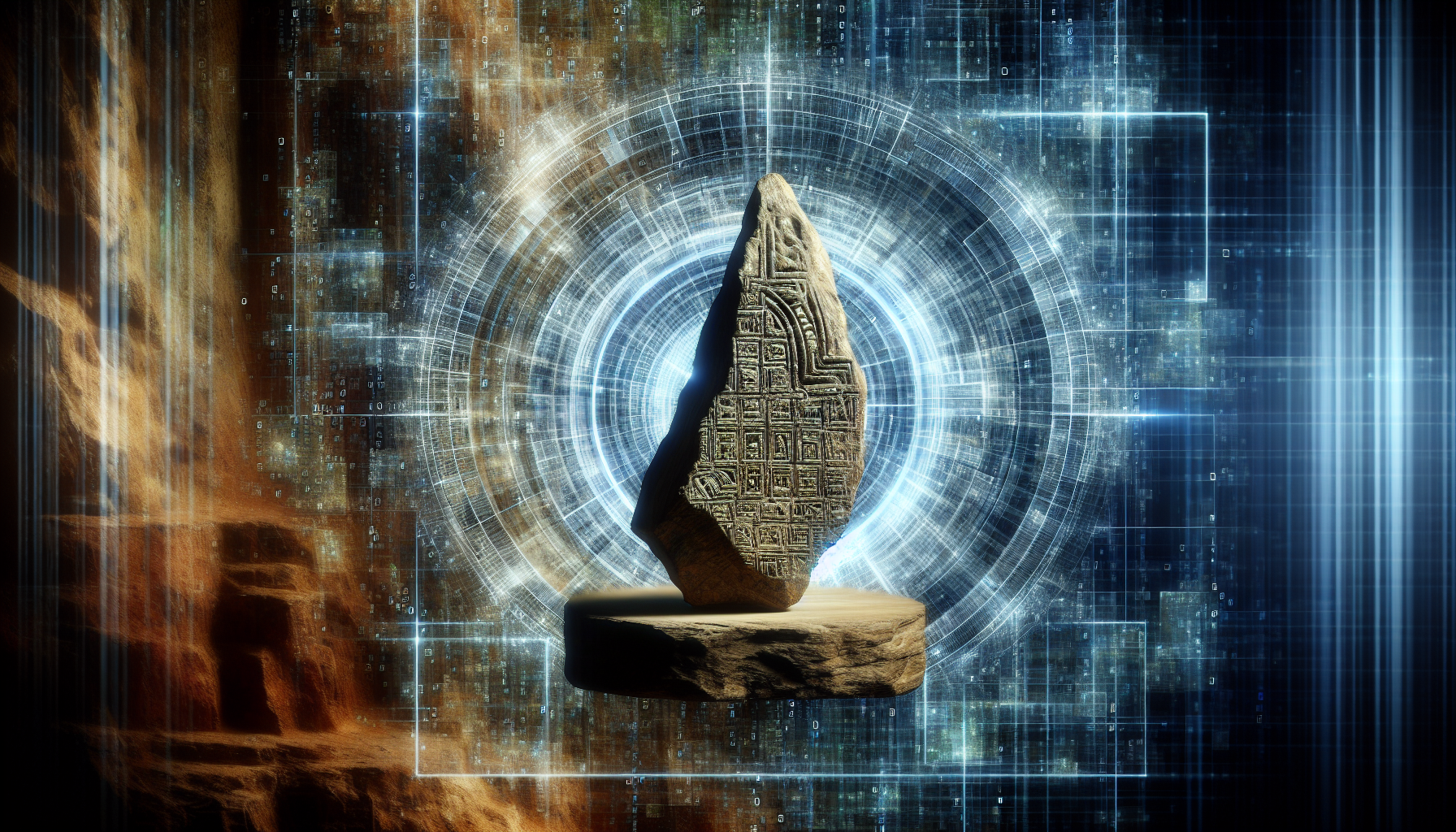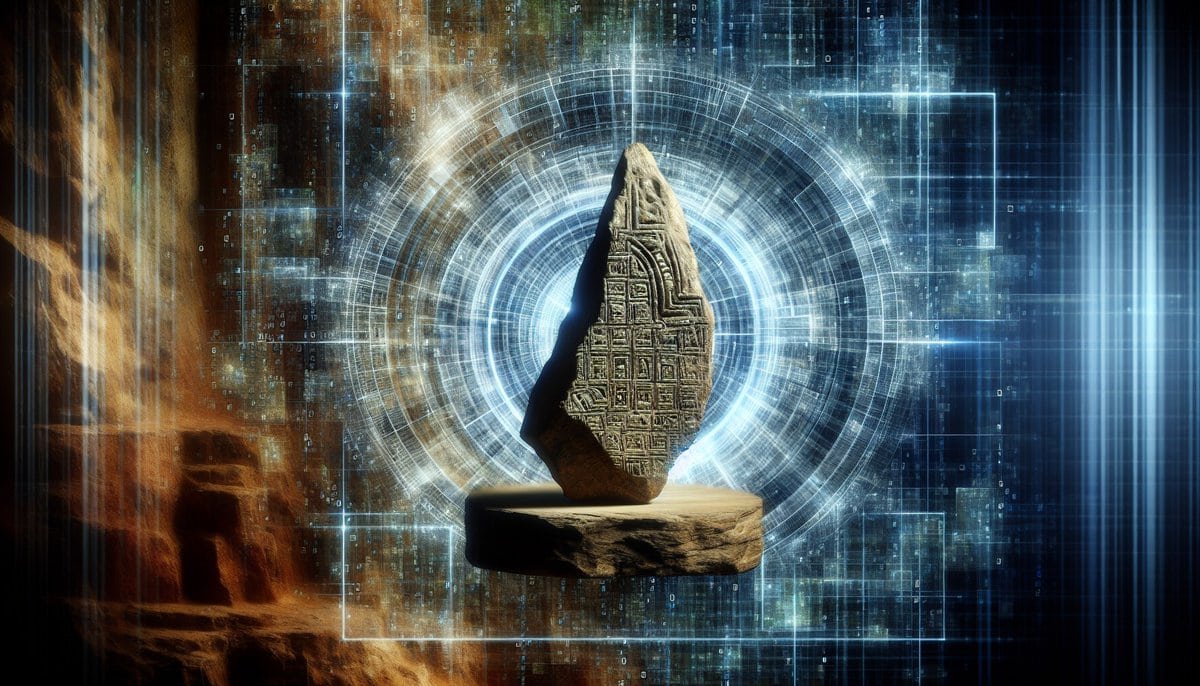In the fascinating field of biblical archaeology, a new frontier is being explored – the link between traditional excavation techniques and the emerging field of digital reconstruction. This innovative approach offers a unique perspective on ancient sites, allowing researchers to virtually recreate and explore these historical locations in a way that was previously impossible. By combining the physical evidence uncovered through archaeological digs with cutting-edge digital technologies, experts are able to gain valuable insights into the past while also preserving and sharing these important sites for future generations.
The Importance of Biblical Archaeology
Biblical archaeology plays a crucial role in unraveling the mysteries of ancient civilizations and enhancing our understanding of the historical context behind biblical texts. By examining ancient sites, artifacts, and inscriptions, biblical archaeologists shed light on the rich cultural and religious traditions of the ancient Near East. In recent years, the field has been further revolutionized by the integration of digital reconstruction techniques, enabling researchers to visually reconstruct ancient sites and gain new insights into their architecture and daily life.
Introduction to Biblical Archaeology
Biblical archaeology focuses on the investigation and exploration of archaeological sites mentioned in the Bible, as well as their surrounding regions. By examining physical remains and artifacts, biblical archaeologists strive to verify and illuminate stories and events described in biblical texts. Through the meticulous analysis of pottery, coins, inscriptions, and architectural remains, these experts piece together a puzzle that allows us to better understand the lives of people who lived thousands of years ago.
Understanding the Role of Biblical Archaeology in Understanding Ancient Sites
Biblical archaeology not only helps us to understand the historical context of the Bible but also provides a broader understanding of the ancient Near East. By studying these sites, researchers can delve into the political, social, and economic dynamics of ancient civilizations. Examining trade routes, urban planning, and burial practices provides valuable insight into the lives of these ancient peoples and helps to reconstruct their daily lives.

Significance of Biblical Archaeology in the Study of Scripture
Biblical archaeology plays a vital role in biblical studies by offering tangible evidence that enriches our understanding of scripture. Discoveries at archaeological sites have corroborated many stories and events described in the Bible. For example, the discovery of the Dead Sea Scrolls shed new light on the accuracy of the biblical texts transmitted through centuries. Through the analysis of artifacts, inscriptions, and ancient texts, archaeologists continue to uncover valuable information that contributes to biblical scholarship and interpretation.
Digital Reconstruction in Archaeology
Introduction to Digital Reconstruction
Digital reconstruction refers to the use of advanced technologies to recreate ancient sites, buildings, and artifacts in a virtual environment. By utilizing various software and techniques, archaeologists can create detailed and lifelike visual representations of what these sites might have looked like in their heyday. The aim is to provide researchers and the public with a more immersive and accurate understanding of ancient civilizations.
Applications of Digital Reconstruction in Archaeology
Digital reconstruction has revolutionized the field of archaeology, enabling researchers to go beyond the limitations of two-dimensional drawings and static models. By digitally reconstructing ancient structures and landscapes, archaeologists can explore different hypotheses, test the feasibility of archaeological interpretations, and gain new insights into ancient architecture, engineering, and urban planning. This technology also enhances the accessibility and educational value of archaeological sites for the public.
Advantages and Limitations of Digital Reconstruction
Digital reconstruction offers numerous advantages to the field of archaeology. It allows for the preservation and visualization of ancient sites that may no longer exist due to natural disasters or extensive deterioration. It also provides a means to explore hypothetical scenarios and test different interpretations of archaeological data. However, digital reconstruction is not without limitations. It relies heavily on the accuracy and completeness of available data, and there is always an element of subjectivity in the interpretation of archaeological evidence. Additionally, virtual reconstructions can never fully replicate the complexity and sensory experience of the original environment.
Biblical Archaeology and Digital Reconstruction
Integration of Digital Reconstruction in Biblical Archaeology
The integration of digital reconstruction techniques in biblical archaeology opens up exciting possibilities for researchers. By combining archaeological data with 3D modeling, virtual reality, and interactive platforms, scholars can create immersive virtual experiences that bring ancient biblical sites to life. These reconstructions enable researchers to better understand the function and layout of ancient structures and provide a more engaging educational experience for the public.
Enhancing Understanding through Digital Reconstruction
Digital reconstruction offers a new lens through which to study biblical sites and artifacts. By digitally reconstructing the Temple Mount in Jerusalem, for example, researchers can explore the architectural and spatial aspects of this monumental religious site. They can analyze the different phases of its construction, examine the intricate details of its design, and gain a deeper understanding of its religious and cultural significance. Through interactive platforms, viewers can virtually explore the reconstructed site, enabling a more immersive and engaging educational experience.
Challenges and Opportunities in Combining Biblical Archaeology with Digital Reconstruction
The integration of biblical archaeology with digital reconstruction presents unique challenges and opportunities. One major challenge is the acquisition and interpretation of accurate archaeological data. The reconstruction process relies heavily on the availability and accuracy of archaeological evidence, such as excavated artifacts and architectural plans. Additionally, the digitization of archaeological data requires careful consideration of ethical and legal issues, such as intellectual property rights and cultural heritage preservation. However, the opportunities for collaborative research, public engagement, and innovative interpretation of ancient sites make the combination of biblical archaeology and digital reconstruction an exciting field of study.

Case Studies: Biblical Sites and Digital Reconstruction
Exploring Jerusalem: Digital Reconstruction of the Temple Mount
Jerusalem, the holy city that holds immense religious significance for multiple faiths, has been the subject of extensive archaeological research. Through digital reconstruction, researchers have been able to recreate the Temple Mount, one of Jerusalem’s most iconic sites. This virtual reconstruction allows scholars and the public to explore the site in astounding detail, providing insights into the architectural complexity of the temple and its surroundings. The interactive experience offers a unique opportunity to better appreciate the historical and religious significance of this ancient site.
Virtual Reconstruction of the City of Jericho
Jericho, one of the oldest inhabited cities in the world, has captured the imagination of both scholars and the general public. Through digital reconstruction, archaeologists have virtually reconstructed the ancient city, allowing us to step back in time and witness the city’s evolution over the centuries. This immersive experience provides a remarkable opportunity to explore Jericho’s unique architecture, defensive walls, and cultural practices. By virtually navigating the reconstructed city, users can gain a deeper understanding of the daily lives of its inhabitants and the historical context in which biblical events unfolded.
Reconstructing the Ancient City of Babylon
Babylon, an ancient city located in modern-day Iraq, is renowned for its architectural marvels and historical significance. Through digital reconstruction, archaeologists have brought this once-great city back to life. By meticulously piecing together archaeological evidence and historical records, researchers have recreated the city’s iconic structures such as the Ishtar Gate and the Hanging Gardens. Virtual exploration of Babylon allows us to appreciate the grandeur and scale of this ancient metropolis and offers profound insights into Babylonian culture, art, and urban planning.
The Role of Technology in Biblical Archaeology
Advancements in Technology and its Impact on Biblical Archaeology
Advancements in technology have significantly impacted the field of biblical archaeology, revolutionizing the way we study and interpret ancient sites and artifacts. High-resolution imaging technologies, such as LiDAR and photogrammetry, enable archaeologists to capture detailed 3D representations of archaeological features and objects. This level of detail allows for more accurate analysis, documentation, and interpretation of artifacts and architectural remains.
Remote Sensing Techniques in Discovering Ancient Sites
Remote sensing techniques, such as aerial photography and satellite imagery, have become invaluable tools in locating and mapping ancient sites. These non-invasive methods help archaeologists identify buried structures, survey large areas efficiently, and detect subtle variations in the landscape that may indicate the presence of archaeological features. Remote sensing technologies have revolutionized the exploration of vast terrains and enabled archaeologists to uncover new archaeological sites that were previously inaccessible or unknown.
Utilizing Geographic Information Systems (GIS) for Analysis
Geographic Information Systems (GIS) have become powerful tools in biblical archaeology, enabling researchers to store, analyze, and visualize vast amounts of spatial data. Through the integration of archaeological data, satellite imagery, and topographic information, archaeologists can perform complex spatial analysis, identify patterns, and explore the relationship between different archaeological sites. GIS technology allows for greater precision in understanding ancient landscapes, trade routes, and settlement patterns, providing important insights into the social and economic dynamics of ancient civilizations.
The Future of Biblical Archaeology and Digital Reconstruction
Emerging Technologies in Archaeological Reconstruction
The future of biblical archaeology and digital reconstruction is filled with exciting possibilities. As technology continues to advance, archaeologists can expect more sophisticated tools and methods for data acquisition and interpretation. Techniques such as 3D laser scanning, augmented reality, and holography hold immense potential for creating highly detailed and immersive virtual reconstructions of ancient sites. These developments will further enhance our understanding of the past and provide new avenues for research and interpretation.
The Role of Artificial Intelligence in Digital Reconstruction
Artificial Intelligence (AI) is poised to play a significant role in the future of digital reconstruction. By training AI algorithms on vast datasets of archaeological data, these intelligent systems can assist in the reconstruction process by automatically identifying patterns and predicting missing details. AI technology can help archaeologists better analyze and interpret artifacts, architecture, and historical contexts, thus expediting the reconstruction process and refining our understanding of ancient civilizations.
Collaborative Efforts for Comprehensive Reconstruction
Collaboration between archaeologists, historians, computer scientists, and digital experts is crucial for the future of biblical archaeology and digital reconstruction. By pooling their multidisciplinary expertise, researchers can overcome the challenges associated with missing data, interpretive bias, and technical limitations. Additionally, cross-disciplinary collaboration allows for a more holistic and comprehensive approach to virtual reconstructions, ensuring that diverse perspectives contribute to the accuracy and richness of the final product.
Ethical Considerations in Digital Reconstruction
Authenticity and Accuracy in Virtual Reconstructions
Authenticity and accuracy are paramount when creating virtual reconstructions of ancient sites. It is crucial to base these reconstructions on well-researched and evidence-based data, ensuring that they reflect the most current knowledge and understanding of the site. Care must be taken to accurately represent the original architecture, materials, and cultural practices, avoiding speculation or fictional additions that may mislead or misrepresent the past.
Preserving Cultural Heritage in the Digital Realm
Preserving cultural heritage extends beyond physical artifacts and sites. In the digital realm, it is important to protect the intellectual property rights of archaeological data, software, and virtual reconstructions. Ethical considerations include appropriate use and sharing of digital reconstructions, transparent documentation of the reconstruction process, and respect for the cultural significance and sensitivities associated with the reconstructed sites.
Balancing the Use of Digital Reconstruction in Interpretation
Digital reconstruction should be viewed as a tool for interpretation rather than a definitive representation of ancient sites. It is essential to strike a balance between using digital reconstructions as a means of enhancing understanding and sparking discussions, while acknowledging their limitations and the inherent subjectivity in the reconstruction process. Open dialogue and critical evaluation of digital reconstructions are necessary to ensure responsible and informed interpretation of archaeological data.
Educational and Outreach Potential of Digital Reconstruction
Engaging Public Interest through Virtual Tours
Digital reconstructions offer an excellent opportunity to engage the public and ignite their interest in biblical archaeology. Through virtual tours of reconstructed biblical sites, the public can explore ancient worlds, gain a deeper appreciation for the historical context of biblical narratives, and develop a sense of connection to the past. Virtual tours can be accessed from anywhere, making this educational resource accessible to individuals across the globe, making it especially valuable in times when physical travel may be limited or difficult.
Educational Benefits of Interactive Reconstructions
Interactive reconstructions provide unique educational benefits, allowing users to actively engage with the past. By virtually interacting with reconstructed artifacts, structures, and environments, learners can gain a deeper understanding of historical contexts, ancient technologies, and the daily lives of people in antiquity. This hands-on approach fosters curiosity, critical thinking, and a deeper appreciation for the complexities of the archaeological record.
Digital Reconstruction for Museums and Exhibitions
Digital reconstruction has immense potential for enhancing museum exhibits and archaeological displays. By incorporating virtual reconstructions into physical exhibitions, museums can provide visitors with a more immersive and dynamic experience. Through interactive displays, visitors can virtually walk through reconstructed cities, explore ancient buildings, and gain a better understanding of the archaeological process. These digital enhancements amplify the educational impact of museum exhibits and make ancient history more accessible to a broader audience.
Collaboration between Archaeologists and Digital Experts
Interdisciplinary Approaches for Successful Collaboration
Successful collaboration between archaeologists and digital experts requires an interdisciplinary approach that fosters effective communication, shared goals, and mutual respect. Archaeologists bring their expertise in material culture, historical manuscripts, and fieldwork, while digital experts contribute their technical skills in 3D modeling, virtual reality, and data analysis. Both parties must strive to understand each other’s perspectives and work together towards a cohesive and comprehensive reconstruction.
Training and Skillsets for Archaeologists in Utilizing Digital Reconstruction
To fully embrace the potential of digital reconstruction, archaeologists must acquire the necessary skills and knowledge to navigate the digital realm effectively. Training programs and workshops focused on digital reconstruction techniques, data analysis, and software applications can equip archaeologists with the tools they need to integrate digital methods into their research. By embracing digital technologies, archaeologists can enhance their research capabilities and contribute to the growing field of digital archaeology.
Building Partnerships for Advancing Research and Conservation
Building partnerships between archaeological institutions, academic research centers, and digital experts is crucial for advancing the field of biblical archaeology and digital reconstruction. Collaborative projects can pool resources, expertise, and funding, enabling more ambitious and impactful research. These partnerships can also foster innovation, encouraging the development of new technologies and methods for data acquisition, analysis, and visualization. By working together, archaeologists and digital experts can push the boundaries of knowledge and contribute to the preservation and interpretation of our shared cultural heritage.
Conclusion
Biblical archaeology and digital reconstruction are inextricably linked, offering vast opportunities for research, interpretation, and public engagement. Through the integration of advanced technologies and interdisciplinary collaboration, researchers can reconstruct ancient sites, unravel the mysteries of the past, and bring ancient civilizations to life. The future holds immense promise for the field, with emerging technologies and evolving methodologies pushing the boundaries of what is possible. As our understanding of the past continues to evolve, biblical archaeology and digital reconstruction will remain invaluable tools in illuminating the ancient world and inspiring future generations.






